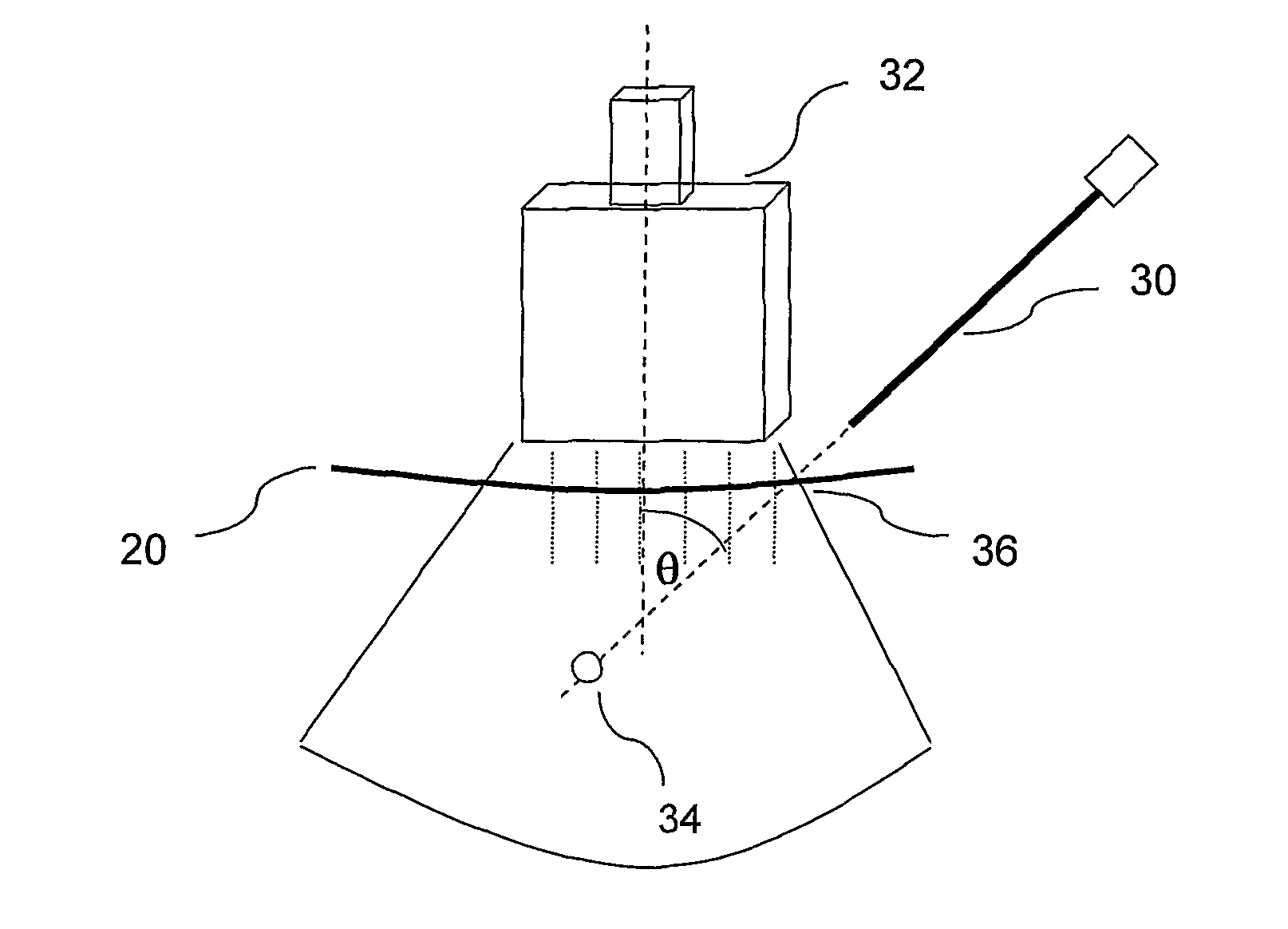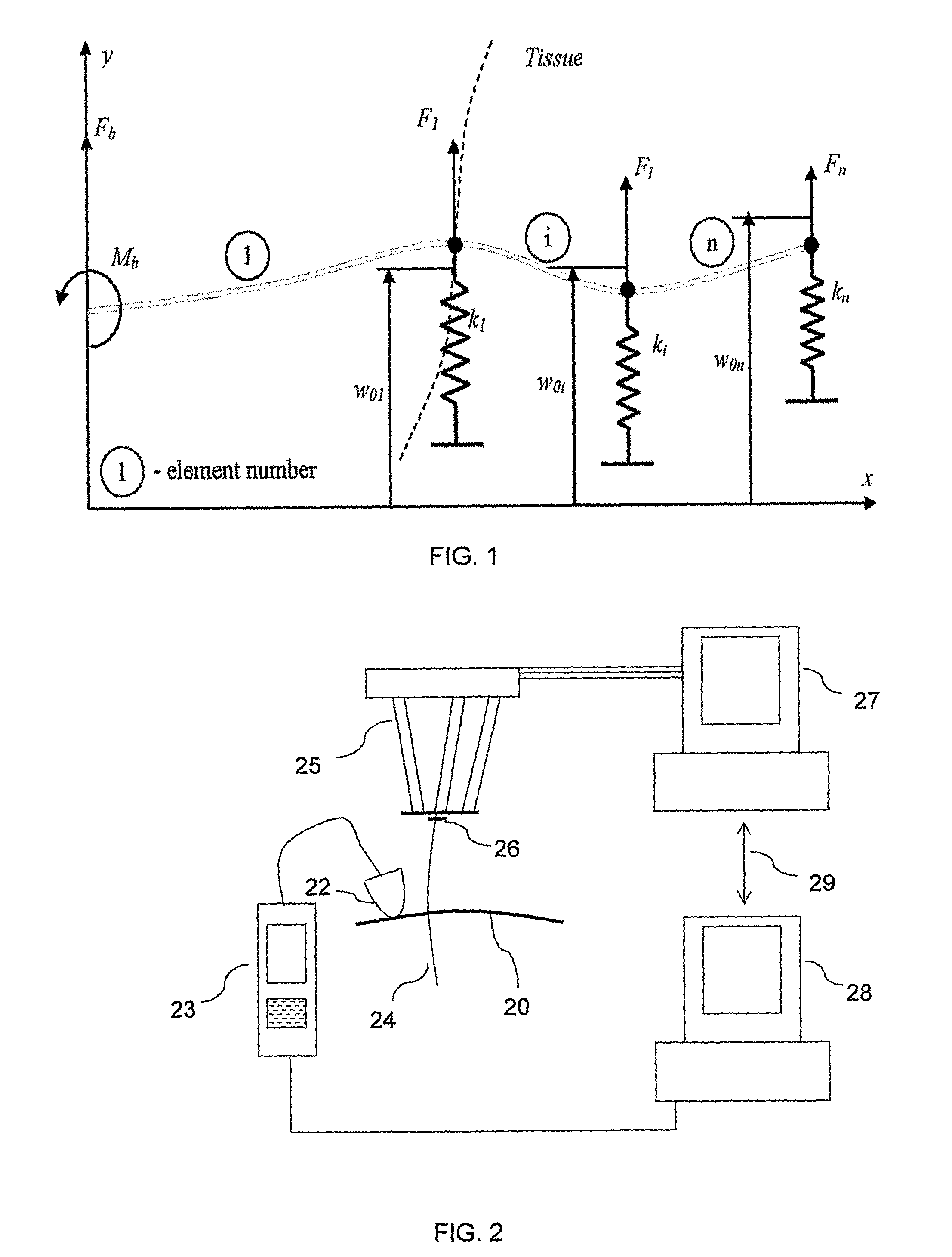Ultrasound guided robot for flexible needle steering
a flexible needle and ultrasound technology, applied in the direction of sensors, catheters, diagnostics, etc., can solve the problems of difficult to see the needle shaft, difficult to interpret such ultrasound images, and difficulty in resolving needles, etc., to achieve the effect of less radiation hazards, less radiation hazards, and less general availability
- Summary
- Abstract
- Description
- Claims
- Application Information
AI Technical Summary
Benefits of technology
Problems solved by technology
Method used
Image
Examples
Embodiment Construction
[0086]Reference is now made to FIG. 2, which is a schematic illustration of an exemplary system for performing the controlled needle insertion methods described in this application. The flexible needle 24 is shown held in the insertion robot 25 and the insertion progress into the subject's tissue 20 is shown being monitored by an ultrasound (US) imaging system, including the ultrasound probe 22 and its control and display system 23. The probe may generally incorporate both the ultrasound transducer and the sensor system for the US energy returned from the needle and tissue. The US control system 23 may generally include the US power supply and the signal processing routines for analyzing the signals received and for generating the US image therefrom.
[0087]The robot 25 used for holding the needle 24, and for aligning and propelling it into the patient's tissue 20 may be an RSPR 6DOF parallel robot, such as that described in the article entitled “Image-guided Robot for Flexible Needle...
PUM
 Login to View More
Login to View More Abstract
Description
Claims
Application Information
 Login to View More
Login to View More - R&D
- Intellectual Property
- Life Sciences
- Materials
- Tech Scout
- Unparalleled Data Quality
- Higher Quality Content
- 60% Fewer Hallucinations
Browse by: Latest US Patents, China's latest patents, Technical Efficacy Thesaurus, Application Domain, Technology Topic, Popular Technical Reports.
© 2025 PatSnap. All rights reserved.Legal|Privacy policy|Modern Slavery Act Transparency Statement|Sitemap|About US| Contact US: help@patsnap.com



